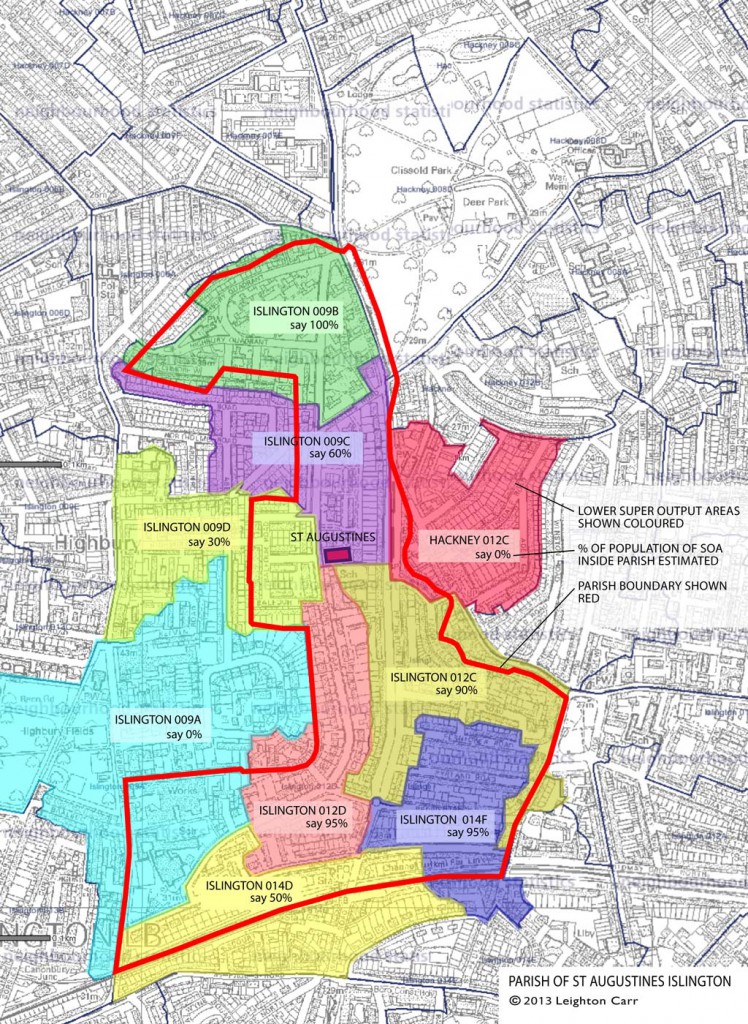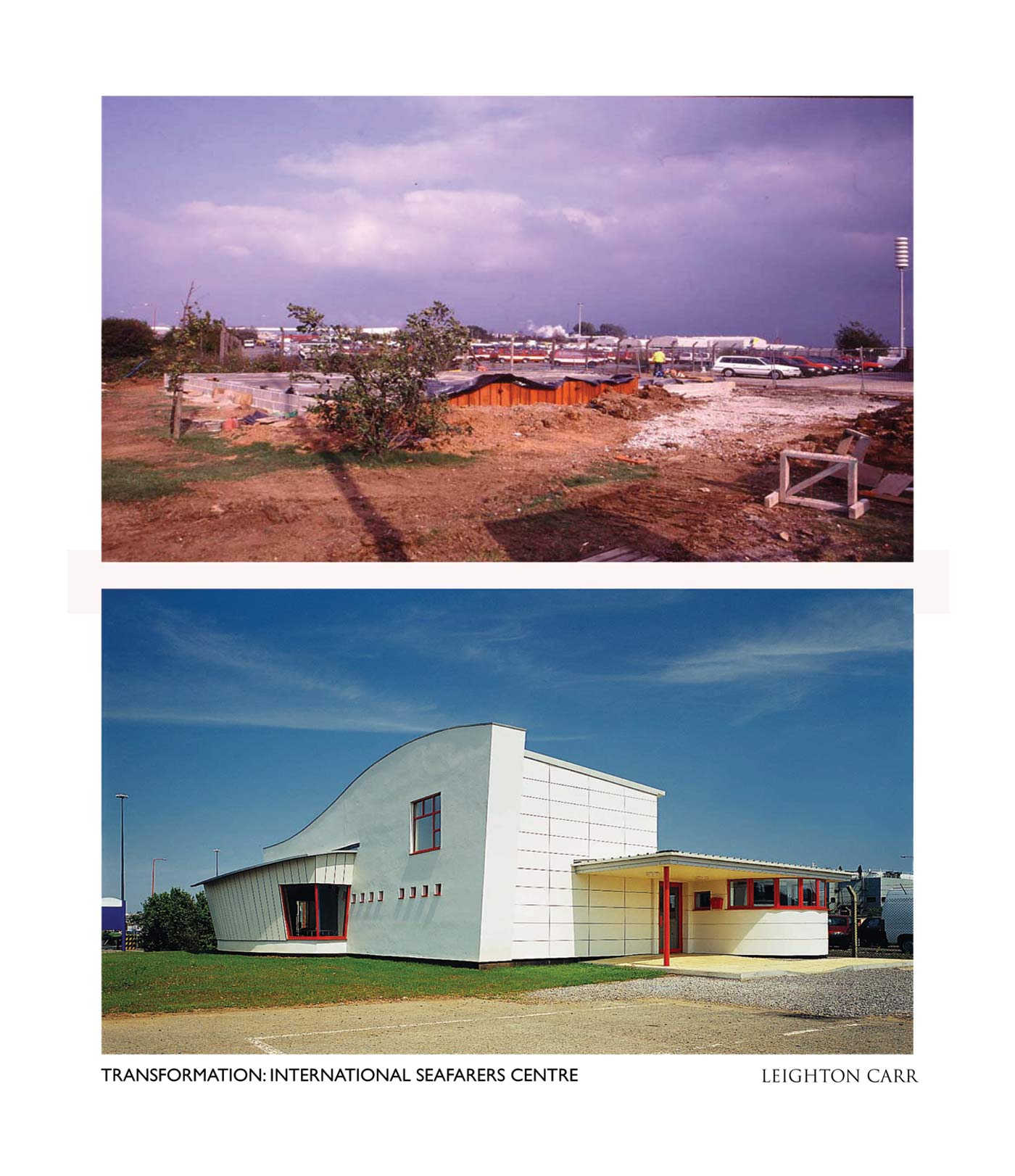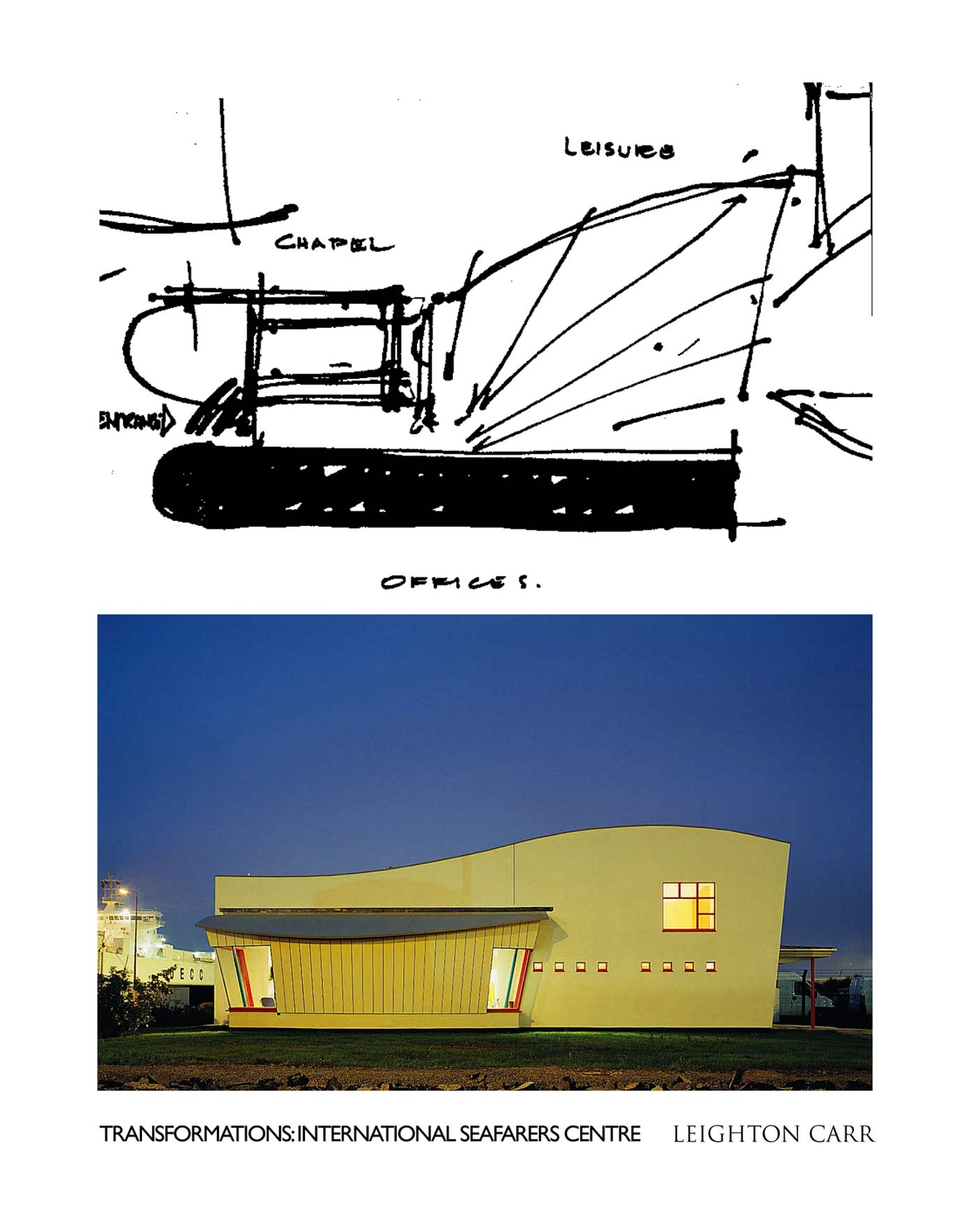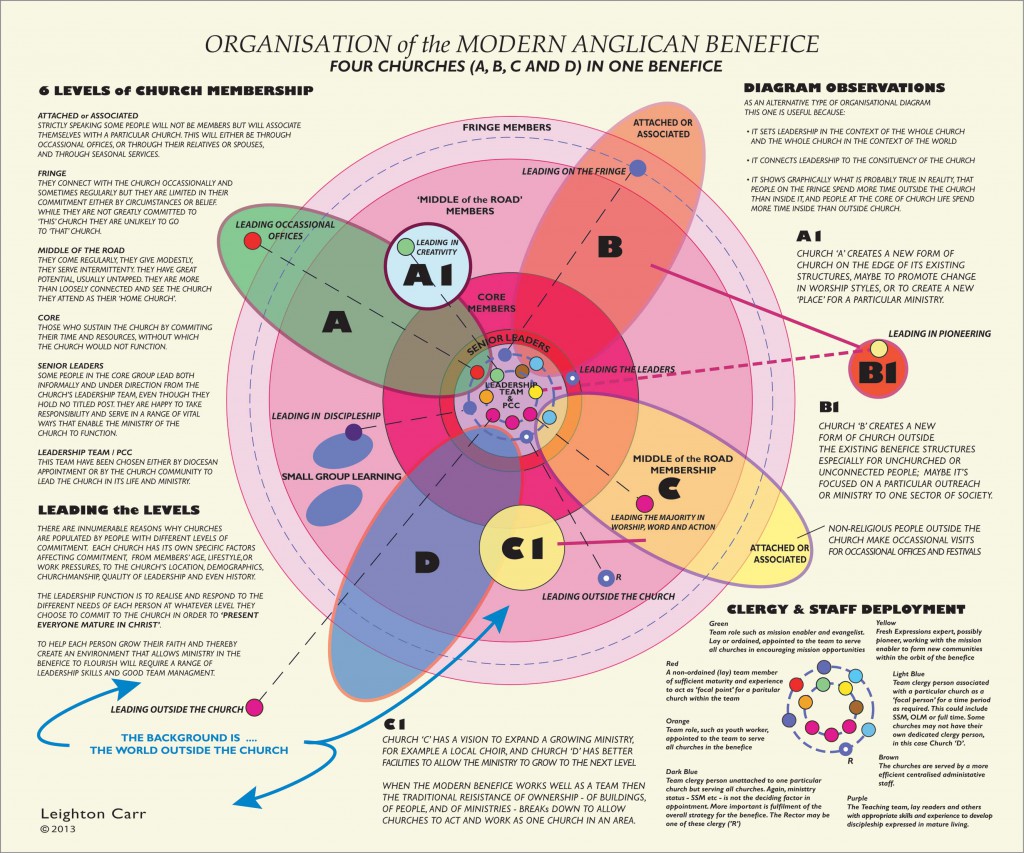After nearly four years of trying and not succeeding to establish a strong youth work we need a new direction.\r\n\r\nCollaboration across churches is the way forward, but it’s hard enough trying to work with a handful of leaders in one church let alone twenty or more leaders across six churches in four parishes. Recognising the need doesn’t always overcome parochial interests.\r\n\r\nWhat’s needed is a clear structure that limits uncertainty and allows, even compels, leaders to buy into it because it’s so possible and so obvious it would be churlish not to.\r\n\r\nThe key words to describe it will probably have to include simple, multi-level, accessible, empowering, flexible yet strong.\r\n\r\nThis is my offering. let’s see how it goes down tonight!\r\n\r\nTo zoom in further click here\r\n\r\n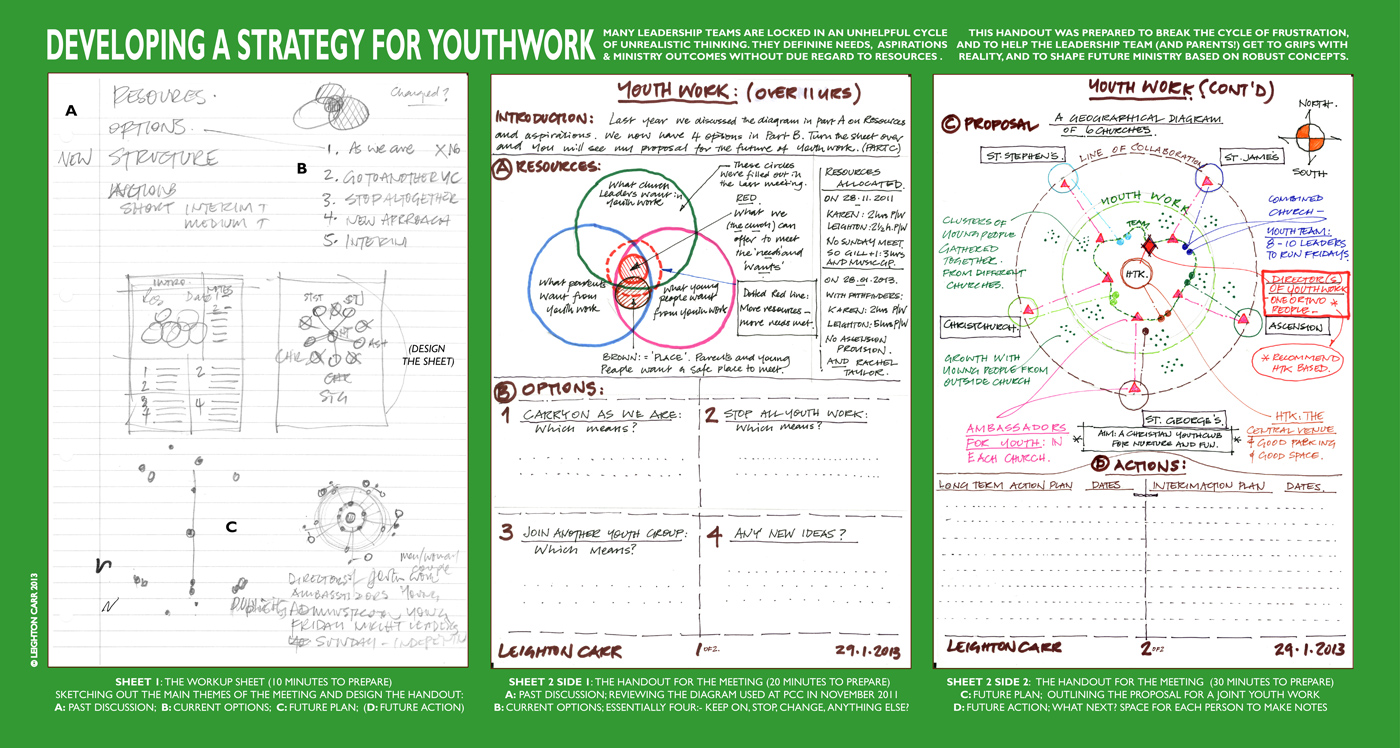
Category: CREATIVITY
Leaf (4)
Leaf (3)
Music
St Augustine’s Islington
It’s a basic premise based on thirty years of problem solving:\r\n\r\nThe Quality of Research determines the Quality of Solutions\r\n\r\nThe wider the frame of reference the broader the perspective available.\r\nThe deeper the subject is mined the richer the solutions become.\r\n\r\nThe opposite is true.\r\n\r\nInadequate Research leads to Inadequate Solutions\r\n\r\nThis is nearly always true of parish ministry. Without a sound understanding of (sometimes arcane) details parish strategies are almost always based on some incomplete premise or another borrowed from a book or a course or from the church’s history or practice or another church.\r\n\r\nWhat sort of research? How could it be used?\r\n\r\nToday I completed a brief overview of St Augustine’s parish in Islington, London. A typical London inner city parish, geographically small, few distinguishing features. Good church building. Committed congregation. The question is, what’s next?\r\n\r\nThe data tells us that nearly 4,000 people in the parish call themselves Christian; and roughly 3,000 people are technically Financially Vulnerable; and nearly 3,000 people are on tax credits. Which is half the working age population. And these may not all be the same people.\r\n\r\nAnd all the reverse details are true too. Half the population are not on benefits, are not financially vulnerable, and do not call themselves Christian.\r\n\r\nAnd there are about 600 pensioners and 1,200 children.\r\n\r\nI’m not sure what that means, but I’m sure it’s better to know than not to know.\r\n\r\nClick here to see the complete details and zoom in, or just look at the map …\r\n
Clarke in the Park
Lead everyone or lead your favourite few?
One leadership question arising from the Organisation of the Modern Anglican Benefice is this:\r\n
“If you are a church leader, who are you leading?”
\r\nIt is easy to focus leadership efforts in church on a small group of core committed people.\r\n
- \r\n
- A group who ‘get it’.
- A group who will move forward willingly, not kicking and screaming.
\r\n
\r\n
\r\nIt is hard to lead across the levels of membership.\r\n
- \r\n
- A wide spectrum of people, from the uncommitted to the core member.
- A group who have different needs pastorally, theologically, socially.
\r\n
\r\n
\r\nIf the choice is made to lead only a few in the church, and not the whole church, then this leadership can be called many things.\r\n
- \r\n
- It can be called leading enthusiastic young adults.
- It can be called leading those who want to be led.
\r\n
\r\n
\r\nBut if most of the church aren’t being led there’s one thing it can’t be called:\r\n\r\n… it can’t be called church leadership.
Transformations: International Seafarers Centre, Royal Portbury Dock (2)
Transformations: International Seafarers Centre, Royal Portbury Dock (1)
Reorganisation of the Modern Anglican Benefice
It would be reasonable to assume that most Church of England clergy are uncomfortable with the idea of simply transferring business models and methods into the church.\r\n\r\nAs the church wrestles with questions of long-term sustainability some new thinking about structures has to be carried out, and it is not enough to simply adopt a streamlined management plan from a profit-motivated organisation and hope that the Anglican church can adapt. For start, most corporate internal organisation charts don’t include the client; they focus instead only on the Team, which can be controlled, not the public, (and for public read ‘Ordinary Church Member’).\r\n\r\nIt was reflecting on this problem which led to the doodle which led to the diagram below. It proposes an alternative organisational diagram for the modern Church of England Benefice.\r\n\r\nFor a larger version for zooming in see here.\r\n\r\nOn the same subject see Models of the Successful Modern Church of England Benefice\r\n



